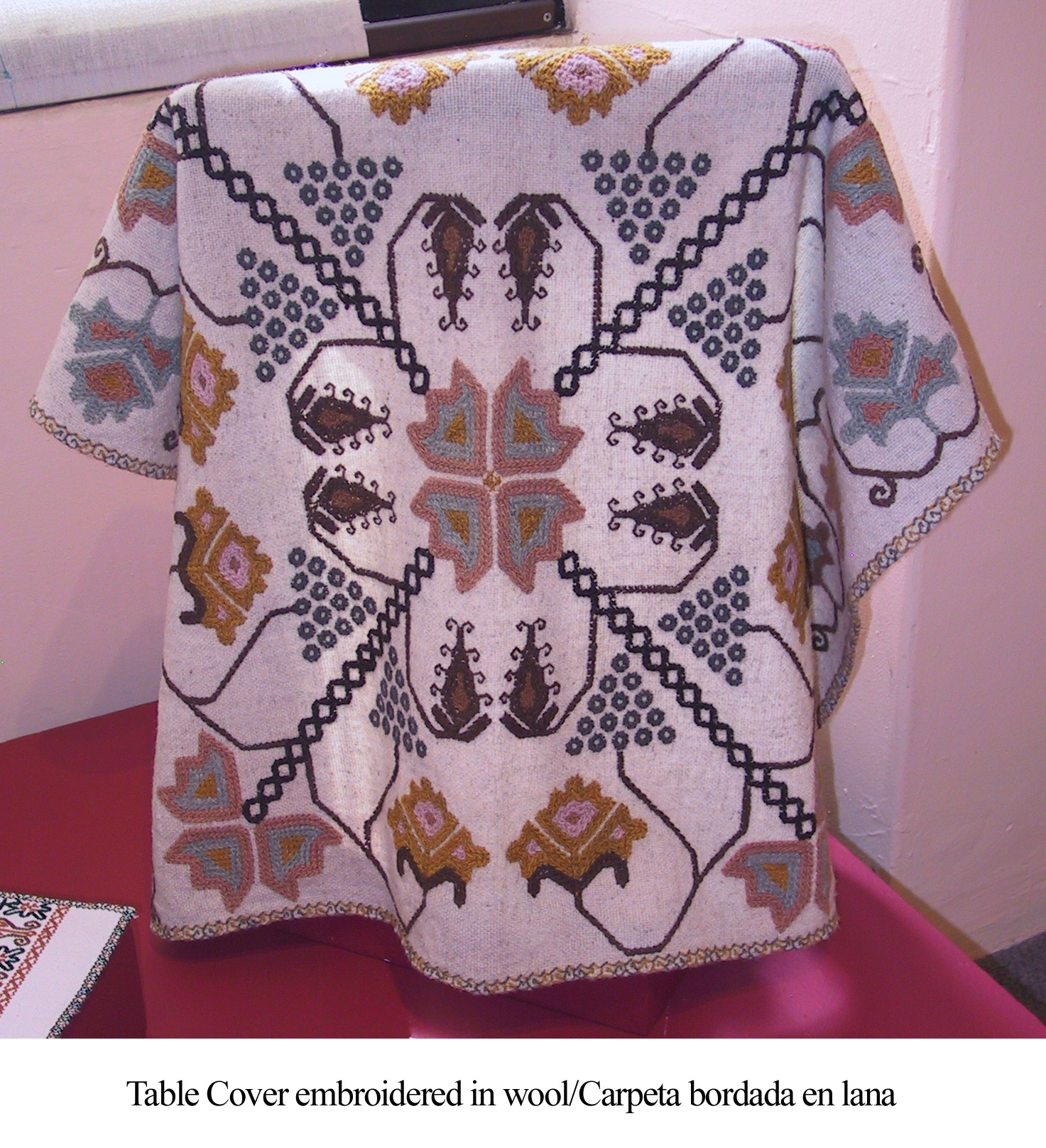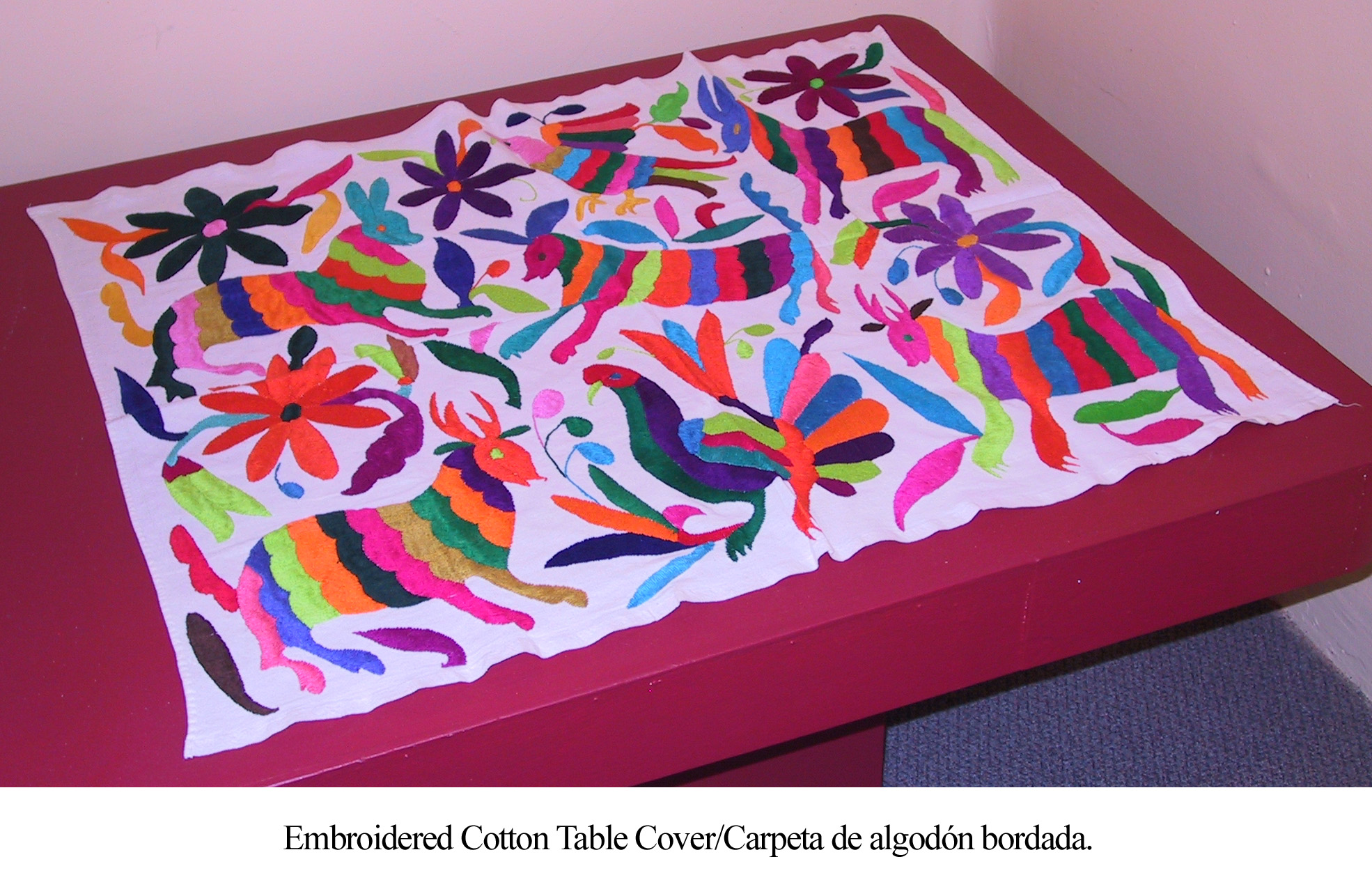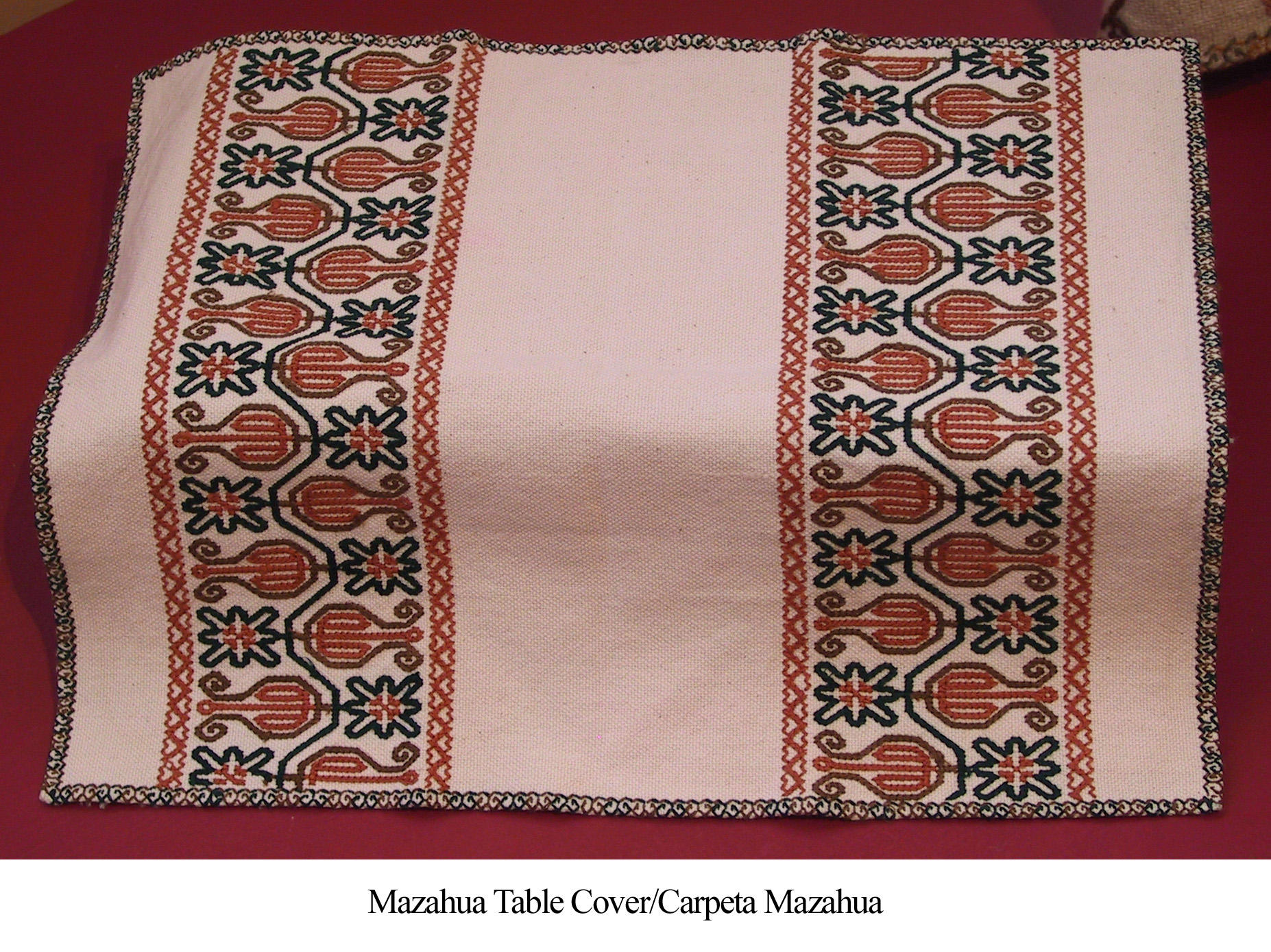Description
Los sarapes son una fusión de la tilma prehispánica y la capa española. En el siglo XIX era, junto con el sombrero, parte de la indumentaria de peones, jinetes, charros y chinacos. Hoy, puede tener una finalidad utilitaria, pero han pasado a ser, también, objetos decorativos.
Era en Tlaxcala donde, en el México prehispánico, se tejían tilmas de algodón y fibras de agave o palma. Lo hacían en telares de cintura hasta que, después de la conquista llegó la lana de borrego y los telares de pedal.
En 1591, cuatrocientas familias tlaxcaltecas fueron reubicadas a Saltillo y ellos llevaron a esta ciudad, del norte del país, sus conocimientos para hacer sarapes. Como ahí se llevaba a cabo una importante Feria donde se vendían diversos productos, los sarapes que ahí se encontraban eran conocidos como “Sarapes de Saltillo”, sin tomar en cuenta quiénes los habían elaborado.
Hoy se producen sarapes en la Ciudad de México y en varios estados de la República. Hay lugares empeñados en recuperar y mantener algunas técnicas ancestrales, sobre todo en las relativas a la decoración y al teñido del material. El procedimiento implica lavar la lana con tequesquite, a fin de quitarle grasa y suciedad; se carda y se elabora un hilo grueso que, antes de tejerlo, se tiñe con tintes naturales extraídos, por ejemplo, de la flor de cempoaxuchil, la nuez de Castilla, el palo dulce o la grana cochinilla.
En 2018, el Congreso Estatal de Tlaxcala declaró al sarape Patrimonio Cultural Inmaterial. Uno de los grandes maestros reconocidos por la calidad de su trabajo es el tlaxcalteca Ignacio Netzahualcoyotl, quien trabaja en un taller abierto en 1898 y obtuvo el Premio Nacional de Arte Popular, 2013.
Se pueden apreciar piezas en el Museo del Sarape de Saltillo, así como en el Tianguis Artesanal de Tlaxcala, y en la Ciudad de México, en el Museo de Arte Popular o en el Centro de las Artesanías.
english
Sarapes, gabanes and ponchos
Sarapes are a fusion of the pre-Hispanic tilma and the Spanish cape. In the 19th century, they were, together with the hat, part of the clothing worn by labourers, horsemen, “charros” and “chinacos”. Today, they may have a utilitarian purpose, but they have also become decorative objects.
It was in Tlaxcala where, in pre-Hispanic Mexico, tilmas were woven from cotton and agave or palm fibres. This was done on backstrap looms until, after the conquest, sheep’s wool and treadle looms were introduced. In 1591, four hundred Tlaxcalan families were relocated to Saltillo and they brought their knowledge of making sarapes to this northern city. There, an important fair was held where different products were sold, and the sarapes produced there were known as “Sarapes de Saltillo”, regardless of who made them.
Today sarapes are produced in Tlaxcala, in Mexico City and in several states of the Republic. Some places are committed to recovering and maintaining some of the ancestral techniques, especially those related to the decoration and dyeing of the material. The procedure involves washing the wool with “tequesquite”, in order to remove grease and dirt. It is carded and a thick yarn is made which, before weaving, is dyed with natural dyes extracted, for example, from the “cempoaxuchil” flower, the walnut of Castilla, the “palo dulce” or the “grana cochinilla”.
In 2018, the State Congress of Tlaxcala declared the sarape Intangible Cultural Heritage. One of the great masters recognised for the quality of his work is the Tlaxcalan Ignacio Netzahualcoyotl, who has been working in an open workshop since 1898 and won the 2013 National Popular Art Prize. Pieces can be seen in the Museo del Sarape in Saltillo, as well as in the Tianguis Artesanal de Tlaxcala, and in Mexico City, in the Museo de Arte Popular or in the Centro de las Artesanías.





Reviews
There are no reviews yet.